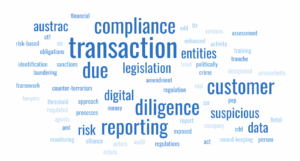Why this matters now
For real estate and property management firms, data often lives in too many places—CRMs, Excel sheets, rent rolls, maintenance logs, trust accounting software, strata portals, emails, and more. This fragmentation doesn’t just cause headaches—it slows down operations, risks compliance issues, and blocks automation and AI adoption.
With new AML/CTF regulations (Tranche 2) coming into effect by 2026, and with rising client expectations for digital experiences, consolidating your systems is no longer optional. It’s essential.
Just as importantly, smarter systems can unlock growth. Consolidated, integrated platforms offer significant ROI—saving hours of admin per week, reducing errors, and enabling better reporting and decision-making. They free up your team to focus on what actually drives revenue: winning and retaining clients.
What this means for Real Estate & Property Management Firms
Disparate data often leads to:
- Double entry and manual errors
- Lack of a “single source of truth” for tenant, owner, and property information
- Inconsistent reporting across departments
- Poor visibility into arrears, maintenance, or upcoming lease renewals
- Difficulty scaling workflows or onboarding AI solutions
- Missed opportunities for upselling or investor engagement
Whether you’re managing 150 or 5,000 properties, the pain is the same: inefficiency, uncertainty, and missed growth potential.
Common traps firms fall into:
- Buying new software without a system map
Many firms jump into new platforms without understanding how existing tools are used—or misused. - Treating integration like a one-off project
APIs and connectors are just part of the puzzle. Change management, data cleanup, and ongoing admin matter just as much. - Over-customizing off-the-shelf platforms
This often results in technical debt that’s difficult to unwind when things change. - Assuming CRMs will “fix” data without effort
CRMs (like PropertyMe, OurProperty, or even Salesforce) are only as useful as the data and processes behind them. - Neglecting team training and governance
A new system won’t work if users don’t understand it or if admins don’t maintain it. - Adding admin staff instead of fixing the root cause
When processes break down, it’s tempting to throw more people at the problem. But most onboarding, data entry, ABN checks, and follow-up tasks can be automated with the right systems. Instead of building a team of manual processors, let the tech do the repetitive work—so your people can focus on what they’re actually great at.
💡 Don’t fall into the admin trap
Before hiring more admin staff, ask: could this be automated? Onboarding, compliance checks, KYC forms, and even email follow-ups can be handled by smart systems.
Let your people do what only people can do:
- Talk to clients
- Build trust and rapport
- Make judgment calls
- Solve complex problems
Technology should remove friction, not add headcount.
How to get started: Tools, Mapping, and Strategy
- Run a process mapping session
Identify your critical workflows—e.g., lease renewal, arrears, maintenance—before trying to automate. - Audit your current tech stack
Review every app, database, spreadsheet, and integration your team touches. - Define your source of truth
Choose where core data lives (and stick to it). This might be your CRM, ERP, or a combination with agreed sync rules. - Integrate where it counts
Focus on high-impact connections like trust accounting + maintenance + communications. - Use AI to surface insights, not replace judgment
Well-structured data can enable predictive insights, like which tenancies are most likely to fall into arrears or which buildings have recurring maintenance risks. - Plan for ROI and growth
The right system doesn’t just reduce friction—it supports expansion. With unified data and streamlined onboarding, your business can scale more easily, cross-sell services, and attract investors with better analytics.
What Argo Logic recommends
At Argo Logic, we help real estate agencies and property managers:
- Map their current and future-state systems
- Create a phased consolidation strategy
- Implement integrations using platforms like Salesforce, Xero, DocuSign, and Formstack
- Build user-friendly dashboards and workflows that support both compliance and operational efficiency
- Maintain the system post-launch through ongoing “nurture services”
We’ve worked with residential, commercial, and strata firms to replace patchwork tools with scalable, self-administerable platforms—designed with AI-readiness and Tranche 2 compliance in mind.
Takeaway Tips
- Don’t start with tech. Start with your business process map.
- Don’t assume consolidation means “one system.” It means coordinated, reliable systems.
- Invest in training and maintenance, not just the build.
- Use automation for high-friction, repetitive tasks (e.g., ABN checks, maintenance updates, arrears reminders).
- Plan for compliance and plan for scale—new systems should pay for themselves through time savings, data quality, and client retention.
Get Started: Future-Proof Your Agency for 2025
The real estate industry will keep evolving. Agencies that invest in real estate technology today will lead tomorrow.
✅ Download our Real Estate Agent Solutions One-Pager: Download Now
✅ Book a free consultation with our real estate technology experts: Contact Us
Don’t wait. Let Argo Logic help you build a smarter, stronger real estate agency.




